How Long Should You Run Your Pool Pump Daily? Expert Tips Inside
February 16th, 2024
February 16th, 2024
On a sweltering summer day, the inviting shimmer of a pool is a magnet for both relaxation and fun. Yet, behind the scenes of this aquatic oasis lies the diligent work of a pool pump, tirelessly circulating water to keep it crystal clear and safe for swimming. The question of how long to run this essential equipment daily is one that puzzles many pool owners. After all, balancing operational efficiency with energy costs is no small feat.
A friend of mine once shared his own trial-and-error journey in pool maintenance. Initially, he ran his pump for 24 hours straight, thinking it was the best way to ensure pristine water. That was until he received his sky-high electricity bill, which prompted a rethink. Through research and some experimentation, he discovered that running his pump for about eight hours a day was sufficient for his pool's needs, adjusting slightly as seasons changed.
Various factors influence the ideal pump run time, including pool size, usage frequency, and the local climate. For instance, those living in warmer regions may find their pools require more filtration to combat algae growth. Conversely, a less-used pool might need fewer hours of circulation. Understanding these nuances helps in crafting a personalized schedule, optimizing both water quality and energy use. As we delve deeper, these considerations will guide us in making informed decisions about pool pump operation.
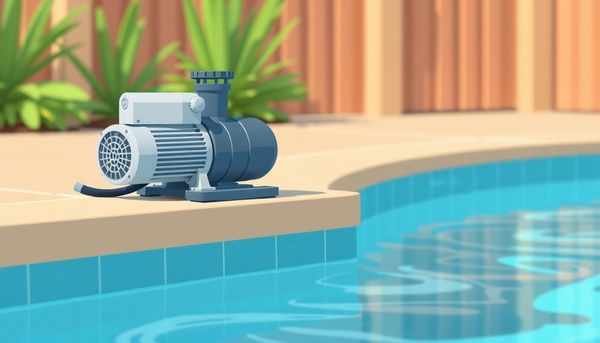
Understanding how to optimize your pool pump's efficiency can transform both your pool maintenance routine and your electricity bill. It all starts with recognizing that your pump isn't just a simple on-off device; it's a crucial part of your pool's circulatory system. Much like a heart, it ensures that every drop of water passes through the filter, keeping your oasis clear and inviting.
First, consider the type of pump you have. Single-speed pumps run at a constant speed, often leading to wasted energy. Upgrading to a variable-speed pump allows for adjustment based on your pool's specific needs, making it a worthy long-term investment. These pumps can operate at lower speeds, using significantly less power, and often qualify for utility rebates. My friend switched to one last summer and saw his electricity costs drop by nearly a third.
Timing also plays a key role. Running your pump during non-peak hours can greatly reduce energy costs. For instance, if your local peak hours are in the afternoon, schedule your pump to work overnight. A programmable timer can automate this, ensuring efficiency without constant supervision.
Lastly, regular maintenance is vital. Clean filters and well-maintained equipment run more efficiently, just like a freshly tuned vehicle runs smoother than one neglected. By fine-tuning your pump’s operation and maintenance, you can enjoy a sparkling pool without breaking the bank.
Maximizing circulation isn't just about flipping a switch and walking away. It's about understanding your pool's unique rhythm and optimizing it for cleanliness and efficiency. Consider this: the pump is the heart of your pool’s ecosystem, circulating water through the filter to trap debris and contaminants. Without proper circulation, water stagnates, inviting algae blooms and murky waters.
To achieve crystal-clear water, calculate your pool's turnover rate. This involves running your pump long enough to move all the water through the filter system at least once a day. For most pools, an eight-hour cycle suffices, but this isn’t set in stone. You might remember visiting a friend's pool that always seemed cleaner than yours, only to find out they cleverly adjusted their pump settings based on their pool's size and layout.
Beyond the basic turnover, timing plays a crucial role. Rather than running the pump during peak electricity hours, which can spike your energy bill, consider early morning or late evening hours. These off-peak times are often more cost-effective, allowing you to maintain circulation without breaking the bank.
Additionally, if you're like many who enjoy a midnight swim, running your pump during nighttime can ensure freshly circulated water. Not only does this enhance the swimming experience, but it also ensures any chemicals added, like pool shock, are evenly distributed, keeping your water safe and inviting.
By understanding and implementing strategic circulation, you'll have a pool that's not only clean but also energy-efficient, saving you money while providing a refreshing escape.
Consider the anticipation of a sunny day and a sparkling pool waiting for you. Yet, behind the scenes, the humble pool pump quietly plays a crucial role, and scheduling its run time wisely can make a noticeable difference in your utility bills. While it's tempting to set it and forget it, a keen eye on timing can help you maintain a clean pool without breaking the bank.
Electric companies often charge more during peak hours when demand is highest. To optimize costs, call your provider to find out the specific peak times in your area. With this knowledge, you can plan your pump schedule during off-peak hours, which might be early morning or late evening. This simple switch can lead to substantial savings over time without sacrificing water quality.
Programmable timers are a pool owner’s best friend in this scenario. By setting your pump to automatically switch on and off at ideal times, you ensure that your pool stays clean and your wallet stays full. Perhaps you’ve heard of a neighbor doing just this, boasting about their reduced energy bills at the last weekend barbecue.
Additionally, consider the needs of your pool. After adding chemicals or performing a shock treatment, running the pump outside peak hours will ensure proper distribution without unnecessary costs. This smart scheduling can turn pool maintenance from a chore into a strategic game that you win every time.
Selecting the right pump type for your pool is akin to choosing the heart of your aquatic sanctuary—it requires careful consideration and understanding. The type of pump you select can significantly influence not only the efficiency of your pool's circulation but also your energy bills.
First, let's talk horsepower. A pump with too much horsepower can be overkill, especially for smaller pools, leading to wasted energy and potential strain on your filtration system. On the flip side, a pump that's underpowered might work overtime without achieving the desired turnover rate, ultimately failing to keep your pool pristine. Matching the pump's power to your pool's size and plumbing specifications ensures optimal performance. If your pool features larger pipes, perhaps a pump with a higher horsepower makes sense. However, for most residential setups, a moderate horsepower pump suffices.
Next, consider the pump's speed. If you're still using a single-speed pump, it might be time for an upgrade. Dual-speed pumps offer flexibility, allowing you to switch between high and low speeds depending on your needs. The true champions of efficiency, however, are variable-speed pumps. They adjust to different speeds, reducing energy consumption and often qualifying for utility rebates.
Remember, an upfront investment in a variable-speed pump could translate to significant savings in the long run. These pumps are quieter, more versatile, and environmentally friendly, making them a smart choice for the eco-conscious pool owner. So, take the plunge and choose a pump that not only complements your pool but also your lifestyle.
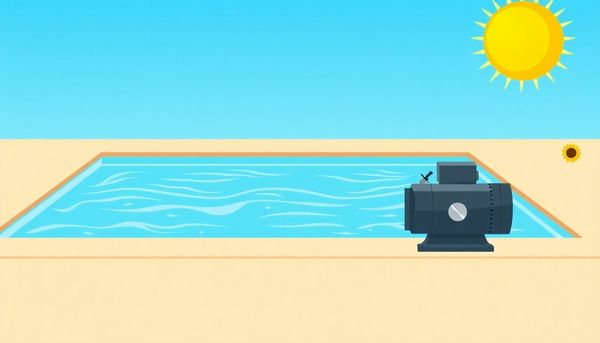
Finding that sweet spot between efficiency and expense is like mastering a well-timed dance. On one hand, you're striving for crystal-clear water, free of pesky algae and debris, yet on the other, you're wary of the toll it might take on your electricity bill. My friend recently shared her experience of tackling this very issue. Her pool, often the centerpiece of summer gatherings, demanded constant attention. Initially, she ran her pump for a solid 12 hours a day, hoping to maintain the pristine waters her guests adored. Yet, her first electric bill of the season prompted a reevaluation.
To strike a balance, she first calculated her pool’s volume and understood its turnover needs. This enabled her to determine the minimal hours required for proper circulation. By utilizing a programmable timer, she scheduled the pump to run during off-peak hours, a decision that noticeably trimmed her utility bill.
Moreover, investing in a variable-speed pump paid off significantly. Though the upfront cost was steeper, the energy savings and operational flexibility made it worthwhile. It also helped her adapt the pump's speed to the pool's needs, further optimizing electricity use.
The blend of strategic planning and smart investment allowed her to enjoy a consistently clean pool without the financial strain. By embracing both technology and timing, anyone can learn to balance cost and circulation effectively.
Understanding how to optimize your pool pump's run time is key to efficient pool maintenance. You don't have to break the bank by running it continuously, nor should you risk a murky pool by running it too little. Instead, strike a balance by considering the specific needs of your pool and the capabilities of your pump.
Every pool has its own unique quirks. Your friend’s sparkling blue oasis might demand a different pump schedule than yours simply due to size, location, or even surrounding flora. Start by determining how much water your pool holds and how long it takes for your pump to circulate all of it—a process known as turnover. Ideally, complete this turnover at least once every day.
Next, consider the type of pump you're using. Variable-speed pumps, though initially more costly, offer significant savings over time. They allow you to adjust speed settings, making it easier to avoid peak electricity costs by running your pump during off-peak hours. If your local power company charges more when everyone gets home and cranks up the air conditioning, plan around it. A programmable timer can be a lifesaver here, ensuring your pump runs at optimal times without requiring you to babysit it.
Finally, don't forget to mix up your pump hours based on chemical treatments. If you’re adding chlorine or shocking your pool, nighttime might be the best option as UV rays can reduce the chemicals' effectiveness during the day. By tailoring your pump's schedule to suit both environmental and chemical conditions, you ensure a sparkling pool without unnecessary expense.
Selecting the right pool pump is akin to choosing the heart of your pool’s circulation system. Not all pumps are created equal, and understanding your pool's unique needs is essential in making the right choice. Start by evaluating the pool size and your specific turnover rate, which will guide you in determining the pump’s required power.
Consider the variety of pumps on the market. Single-speed pumps, though traditional, can be energy guzzlers—excellent for simple setups but not the most efficient for long-term savings. Dual-speed pumps offer flexibility; they allow you to run at a lower speed for regular filtration and a higher speed for more intensive cleaning tasks.
Yet, perhaps the unsung hero of modern pool maintenance is the variable-speed pump. Though initially pricier, it pays off by adapting its speed to your pool’s requirements, conserving substantial energy, and significantly reducing electricity costs. Many users report that these pumps operate quietly, a boon for serene backyard afternoons.
My neighbor, for instance, switched to a variable-speed pump last summer. After a few months, he delightedly showed me his reduced energy bills, and his pool water had never been clearer. Though skeptical at first about the upfront cost, he now champions it as the best investment for any pool owner looking to balance efficiency with cost.
When choosing your pump, think long-term. The right pump doesn't just save money; it enhances your pool's longevity and keeps maintenance manageable.
Energy bills can sneak up on you, especially when you're running a pool pump. The trick to keeping costs in check is using non-peak hours for operation. Many pool owners haven't considered how electricity rates fluctuate during the day, but embracing this small detail can make a huge difference.
In my own experience, a quick call to the power company unveiled that my peak hours stretched from late afternoon to early evening. I shifted my pool pump schedule to late night and early morning, aligning with lower-rate hours. This simple change shaved a noticeable chunk off my monthly bill, all while keeping the pool gleaming.
Beyond cost savings, consider the practical side of running your pump during quieter hours. If you've ever added pool chemicals, you know they need circulating to be truly effective. Running your pump overnight ensures those chemicals distribute evenly, avoiding over-concentrated spots where they might dissipate too quickly under the harsh sun.
Moreover, if you're shocking your pool, nighttime is your ally. The sun can degrade pool shock, reducing its potency. By running the pump after dusk, you guarantee that the shock has ample time to work its magic.
While a continuous eight-hour operation might seem daunting, breaking it into segments around non-peak times can be effective. This flexible approach not only keeps your pool pristine but also keeps your wallet happy.
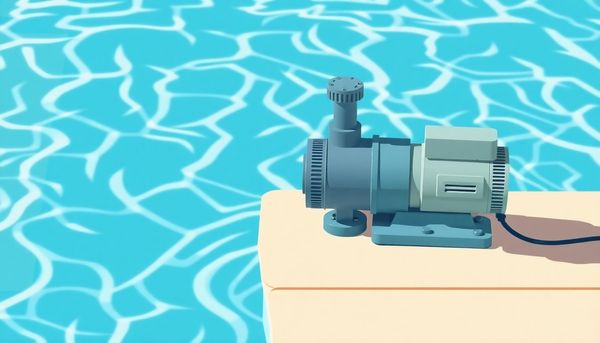
Grasping the nuances of pool water chemistry is like unlocking a secret to maintaining that crystal-clear oasis right in your backyard. When it comes to balancing the water, it's not just about adding a few chemicals here and there—it's an art. The health of your pool hinges on precise measures of pH, alkalinity, and calcium hardness. Each element plays its part in safeguarding your pool's infrastructure and ensuring a safe swimming environment.
Starting with pH balance, aim to keep it between 7.2 and 7.8. This range is not just for comfort; it also optimizes chlorine efficiency. Speaking of chlorine, maintaining levels between 1-3 ppm (parts per million) is crucial to fend off bacteria while avoiding the irritation that too much can cause. Alkalinity acts as a buffer for pH fluctuations, so keeping it within 80-120 ppm will provide stability.
Now, let’s not forget about calcium hardness, which should be between 200-400 ppm. This prevents scaling and corrosion, protecting your pool surfaces. For clarity, a personal anecdote: I once ignored my pool’s calcium hardness, and in no time, the walls developed unsightly scales. Regular testing and adjustments can save you from such headaches.
As you tailor your pool pump schedule, remember that the blend of proper chemistry and circulation is what transforms a pool into a sparkling retreat rather than a maintenance nightmare. Keep testing, adjust accordingly, and you'll master the chemistry that makes pool care feel less like a chore and more like second nature.
Balancing the art of pool pump usage is much like finding the right tune on an old radio; it requires careful adjustment to achieve harmony. Rather than sticking to a rigid schedule, consider the unique rhythm of your household and the weather patterns of your area. While my own pool pump saga began with an eye-popping electricity bill, it transformed into a lesson in strategic timing and equipment optimization.
Begin by assessing your pool pump's type and capacity. A variable-speed pump can be your best friend, offering flexibility to run at lower speeds during non-peak hours, drastically reducing energy costs. My neighbor, who swore by his single-speed pump, eventually switched after witnessing the drop in my energy bills. It was a revelation—like discovering a secret shortcut home.
Next, dance around the peak electricity hours. By running your pump during off-peak times, you lessen the burden on your wallet. For instance, in many regions, early mornings or late evenings are ideal, allowing your pump to hum quietly while you enjoy lower electricity rates.
Finally, don't underestimate the power of regular maintenance. Keep your filtration system clean and free of debris. I learned this the hard way after a particularly windy night left my filter clogged, causing the pump to work overtime.
In the end, optimizing your pool pump is about crafting a balance between efficiency and economy, ensuring your oasis remains a source of relaxation rather than frustration.
Water circulation in a pool is akin to the lifeblood that keeps the ecosystem thriving. Without it, a pool can quickly become a breeding ground for unwanted organisms. The heart of this system is your pool pump, tirelessly working to ensure every drop of water is filtered and fresh. Think of it like the circulatory system in your body—essential for maintaining health and balance.
Remember last summer when your pool turned a murky green overnight? That’s what happens when circulation falters. Pumps must run long enough to achieve a full turnover of water. This ensures every gallon passes through the filter daily, capturing debris and preventing algae blooms. The time needed for this turnover varies based on the pool size and pump capacity, but generally, eight hours per day is a safe bet.
Consider your pool’s unique needs. Variable-speed pumps offer a tailored approach, allowing you to adjust the flow based on your pool’s specific requirements and even save on energy costs. A programmable timer can help manage this, optimizing circulation during off-peak hours and after chemical treatments. For instance, after a late-night pool party, running the pump overnight can ensure thorough cleaning and chemical distribution without hitting your wallet hard.
So, calibrate your pump wisely, keep the water flowing, and enjoy a sparkling pool without the stress. These strategies not only improve circulation but also enhance the overall swimming experience.
Amid the labyrinth of pool maintenance logistics stands a pivotal choice: selecting the right pump. It’s akin to picking the heart of your pool’s circulatory system. Much like you wouldn't fit a tiny heart in a giant body, you need a pump that matches your pool’s size and needs. My friend Sarah learned this the hard way. She initially bought a pump that was too small for her expansive backyard pool. It ran endlessly, guzzling power, yet the water remained stubbornly murky.
Understanding the nuances of pumps makes a world of difference. Single-speed pumps, though common, are akin to a car stuck in first gear—they guzzle electricity and run at full throttle all the time. Dual-speed pumps offer a bit more finesse, allowing for lower speeds when full power isn’t necessary. But the true champions of efficiency are the variable-speed pumps. These marvels adjust to your pool’s demands, quietly working at the optimal speed, saving energy and, ultimately, money.
Sarah eventually upgraded to a variable-speed pump, and it was transformative. Her pool stayed sparkling clean, and she noticed a significant drop in her electric bill. Moreover, some regions even offer rebates for using these energy-efficient models. When you choose a pump, consider how it fits into your pool’s ecosystem. You'll be rewarded not only with cleaner water but also with peace of mind.

Understanding how to calculate the ideal pump runtime for your pool can transform your approach to pool maintenance from guesswork to precision. A friend of mine once thought running the pump 24/7 was the answer, but a staggering electricity bill soon corrected that notion. Instead of maxing out the pump, let’s focus on determining the perfect balance for both cleanliness and cost-effectiveness.
Start by knowing your pool’s volume; it’s like learning your car's fuel capacity. Use a reliable pool calculator to get this figure. Then, divide your pool's volume by eight to find out how many gallons per hour (GPH) need to be cycled through your pump. Remember, pool pumps often use gallons per minute (GPM) instead. Simply take your GPH and divide by 60 to convert to GPM.
The next step involves aligning your pump’s capability with your pool’s requirements. Choose a pump that meets or slightly exceeds your calculated GPM to ensure a complete turnover. For example, if your pump can circulate more water than necessary, it’s not an issue; just avoid a pump that falls short of your needs.
Finally, don't forget to consider the type of pump and your local peak electricity hours. By programming your pump to run during off-peak times, you can further optimize energy use and reduce costs. This thoughtful approach ensures your pool remains a crystal-clear oasis without breaking the bank.
Understanding the volume of your pool is akin to knowing the size of a canvas before painting a masterpiece. Each pool has its own character, and determining its volume is the first step in ensuring optimal pump efficiency. Consider my own experience with a freeform pool, nestled in my sunny backyard, its irregular shape initially made it daunting to calculate its volume. But once we broke it down into smaller, manageable sections and used a reliable pool calculator, the task became surprisingly straightforward.
The volume of water your pump needs to circulate is crucial. Begin by measuring the pool's dimensions—length, width, and average depth. For rectangular pools, the formula is fairly simple: multiply these three numbers together and then by 7.5 to convert cubic feet to gallons. Irregular shapes like mine might require a bit more creativity, breaking the pool into basic geometric shapes and summing the individual volumes.
Once you’ve pinned down this essential figure, turn your attention to your pump's capability. By dividing the total volume by eight, you’ll discover the gallons per hour (GPH) needed for one complete turnover cycle. Remember, most pumps are rated in gallons per minute (GPM), so a quick division by 60 will translate your GPH into GPM. Select a pump that meets or slightly exceeds this number without overkill. This ensures efficient circulation and filtration, keeping your pool pristine without inflating your electricity bill.
Effective pump scheduling not only optimizes your pool’s performance but can also significantly reduce your energy bills. Picture a mid-summer afternoon when the sun's intensity is relentless, and everyone seeks refuge in your backyard oasis. It's tempting to run the pump non-stop to maintain pristine waters; however, understanding energy rates and pool chemistry can lead to smarter decisions.
Firstly, familiarize yourself with your local utility’s peak and off-peak hours. Electricity costs can spike during peak times due to increased demand. By shifting your pump's operation to off-peak hours, you could see substantial savings. For example, running your pump in the early morning or late evening could capitalize on lower rates.
Moreover, coordinate pump operation with chemical treatments. After adding chemicals like chlorine, it's crucial the pump runs long enough to disperse them evenly. Running your pump during cooler night hours can prevent unwanted sun degradation of chemicals like pool shock, ensuring they remain effective.
Additionally, consider investing in a programmable timer if you haven't already. This device allows precise control over your pump's schedule, alleviating the need for manual intervention. You can easily set it to run multiple times a day to ensure proper circulation without exceeding necessary run time.
In essence, optimizing your pump schedule revolves around understanding your pool's needs and your energy provider's pricing structures. With a thoughtful approach, you can maintain a crystal-clear pool while keeping your budget intact.
Choosing the right type of pool pump is more than a technical decision; it's a dance between efficiency, cost, and your pool's unique needs. Each pool whispers its own tune, and your pump should be in harmony with it. A good friend of mine once swapped out his old single-speed pump for a dual-speed model. Overnight, his energy bill shrunk, and his pool's water transformed into a clearer, more inviting paradise. The key? Understanding the nuances of pump types.
Single-speed pumps are like those old reliable cars—simple, but they guzzle energy. Dual-speed pumps, as the name suggests, offer flexibility: a low speed for gentle daily circulation, and a high speed for tasks like vacuuming or backwashing. Then there are the variable-speed pumps, the wizard of the bunch, offering precision control over speed and, consequently, energy usage. While pricier upfront, they often pay for themselves in energy savings and utility rebates over time.
Moreover, consider your pool's size and plumbing when selecting a pump. You wouldn't want to pair a robust, high-horsepower pump with a small filtration system—it could lead to inefficiencies and potentially damage your setup. It's like wearing hiking boots to a ballet recital: mismatched and unnecessary. Instead, align your choice with your pool’s demands to ensure optimal turnover rates without breaking the bank.
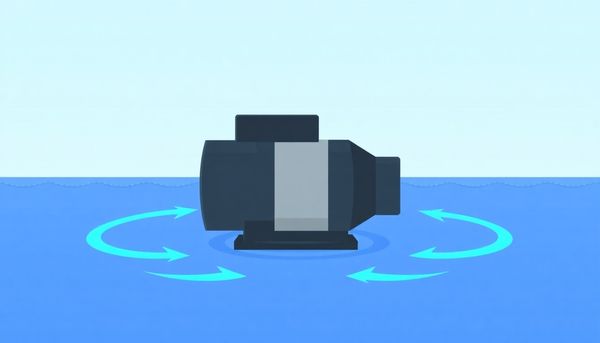
Choosing the right pool pump can feel as daunting as a chemistry exam, but selecting the ideal type can save you both time and money. Not all pool pumps are created equal, and the nuances of each can significantly impact your pool's efficiency. Consider the single-speed pump, long the standard in pool care. It operates at a constant speed, burning energy like a marathon runner who skipped breakfast. While initially cheaper, the high energy consumption may inflate your electricity bill faster than a pool inflatable on a windy day.
In contrast, dual-speed pumps offer a more balanced approach. They allow you to switch between high and low speeds, making them versatile enough for everyday circulation and energy-efficient modes. This adaptability can help manage your pump's run time without compromising on water quality or breaking the bank.
For those seeking the pinnacle of efficiency, variable-speed pumps are the heroes of the pool world. They adjust to your pool’s needs with precision, like a finely tuned orchestra. Though they come with a heftier price tag, their energy savings and potential utility rebates can quickly offset initial costs. Plus, their quieter operation means you can enjoy a peaceful afternoon swim without the background noise of a bustling factory.
Ultimately, understanding your pool's specific requirements and budget will guide you to the right pump type. Embrace the choice that aligns with your pool's needs, and enjoy the balance of clear water and happy finances.
In the labyrinth of pool maintenance, mastering pump efficiency is like finding the golden ticket to energy savings and crystal-clear water. Instead of letting that pump hum on endlessly, a strategic approach can transform your pool experience and your utility bill. It starts with understanding the unique needs of your pool and the capacity of your pump.
Think of your pool as a living, breathing entity that thrives on movement. The turnover rate is crucial; it’s the secret handshake between your pool and the pristine clarity you desire. Ensure your pump can turn over the pool’s volume at least once every eight hours. This involves knowing your pool's volume and matching that to the pump's gallons per minute (GPM) capacity.
For example, I once discovered how effective it was to run my pump in short bursts during off-peak electricity hours. By programming my variable-speed pump to operate at lower speeds for longer periods overnight, I shaved dollars off my bill. This method not only ensured the water circulated efficiently but also reduced wear and tear on the pump itself.
Moreover, the choice of pump significantly impacts efficiency. Variable-speed pumps are game-changers, offering flexibility and energy savings. Unlike their single-speed counterparts, they adjust to your pool’s specific needs, operating quietly in the background like a well-tuned orchestra.
Optimizing pump efficiency demands a little math and a bit of strategy, but the rewards are clear: a sparkling pool and more cash in your pocket. It’s a win-win that transforms routine maintenance into a savvy, money-saving endeavor.
When weighing the costs of pool care, the financial considerations of running a pool pump take center stage. First off, your electricity bill is likely to reflect the pump’s daily workout, especially if it's not optimized for efficiency. With energy costs on the rise, it's wise to evaluate how long and when you're running your pool pump. Perhaps, like many folks, you prefer the convenience of leaving your pump on all day. However, this could lead to a nasty surprise when your electric bill arrives.
Switching to a variable-speed pool pump, although initially more expensive, can be a game-changer. These pumps adjust their speed to the pool’s demands and run at lower RPMs, significantly cutting energy consumption. Furthermore, such pumps often qualify for utility rebates, making that upfront investment a little easier on the wallet. It’s also worth noting that some areas, like California, have regulations encouraging energy-efficient pool systems, so checking local policies might yield additional incentives.
Another cost-saving strategy involves timing. By aligning your pool pump’s operation with off-peak electricity hours, you not only ease the strain on the grid but also benefit from reduced rates. This may require a bit of coordination, possibly using a programmable pool timer, but the savings add up. So, in the quest for crystal-clear waters, a strategic approach to pool pump management can keep both your pool and your budget in healthy balance.
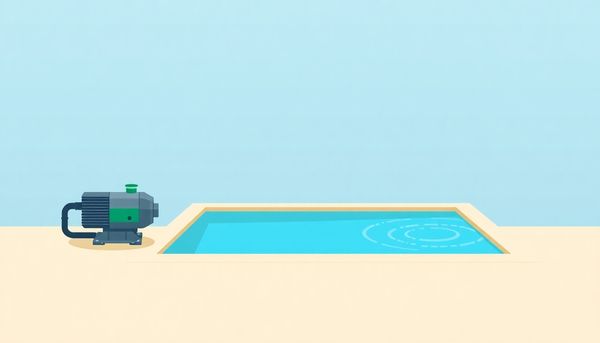
This article provided insights into maintaining your pool. Start your pool care journey today!
Want to become a pool maintenance expert? Our free Pool School course covers everything you need to know about pool care. From basic maintenance to advanced troubleshooting, you'll learn how to:
Join over 10,000 pool owners who have already transformed their pool care routine. Get started with our free Pool School course today!